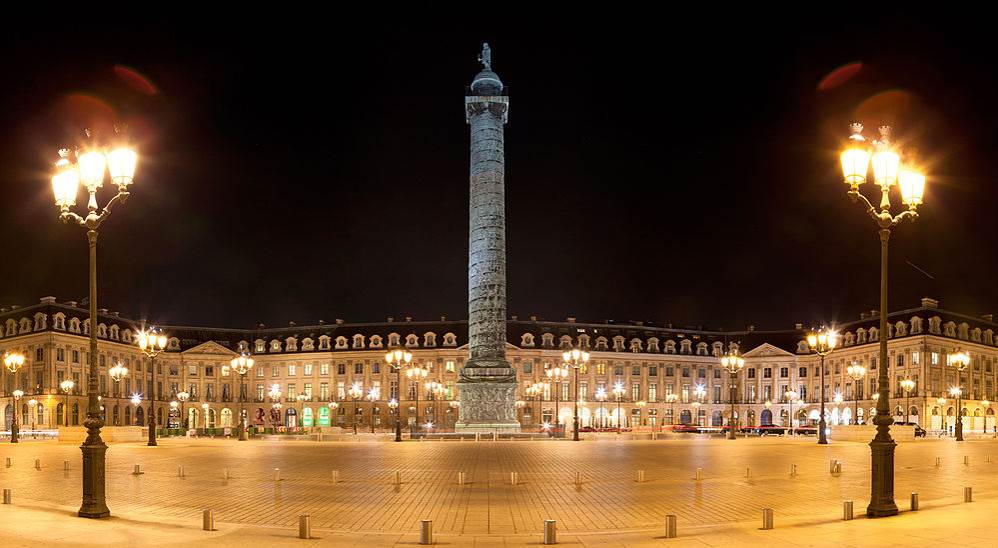When you enter one of the amazing squares in Paris you’ll encounter one of the most impressive landmarks in France’s capital.
The Place Vendôme has an extensive history that goes back to the late 17th century and was the scene of some important events in France’s history.
Let’s take a closer look at some of the most interesting facts about this remarkable square in the heart of one of the most beautiful cities in the world.
1. The square is located in the 1st arrondissement of the city
The Place Vendôme is a square lined with “hôtels” or townhouses in the 1st arrondissement of Paris. This is right in the heart of the city and just northwest of the historical center.
The square is relatively large and looks quite impressive when you enter it. It’s nearly perfectly square with dimensions of 213 x 224 meters (698 x 734 feet).
Paris is a city that appears to have never-ending wonderful feats of architecture. The central location of the square means that it’s surrounded by famous landmarks. Here’s an overview:
- The Madeleine Church, a Neoclassical building that was transformed into a stunning church, is located just west.
- The Tuileries Garden with the adjoining Place de la Concorde is located just south and southwest.
- The Palais Garnier, one of the most amazing opera houses in the world, is located a few blocks north.
The square marks the starting point of the Rue de la Paix, a fashionable shopping street in the city.
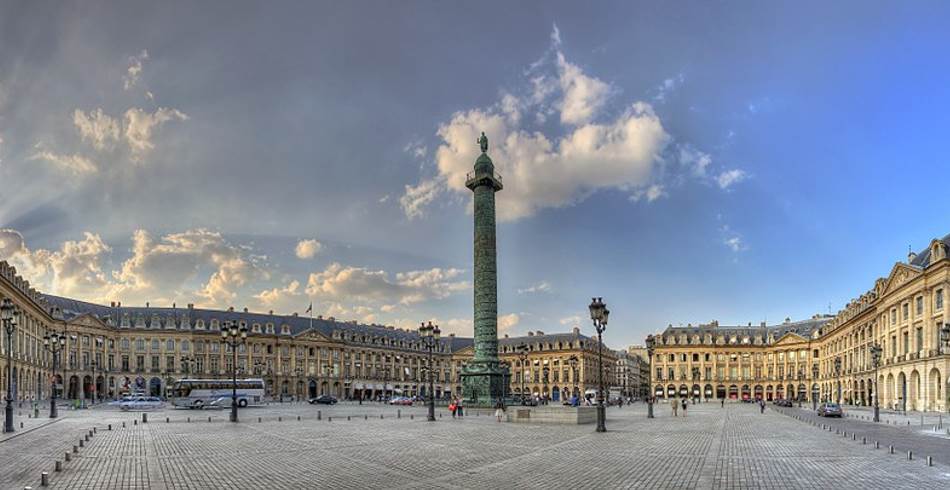
2. It was commissioned by King Louis XIV in the year 1698
Before the square was established, this location was the home of César de Bourbon, Duke of Vendôme. This is how the square eventually got its name.
It was initially commissioned by King Louis XIV (1638-1715) in 1698 with the idea of erecting a monument in his honor and to commemorate his army.
A huge equestrian statue of the king was placed in the center of the square in 1699. It was sculpted by a French Baroque sculptor named Gerard Girardon, a man who sculpted numerous works to decorate the opulent gardens of the Palace of Versailles.
The king never managed to see the square completed because it wasn’t finished in its current state until 1720.
His equestrian statue was destroyed during the French Revolution and only a small version has been preserved at the Louvre Museum.
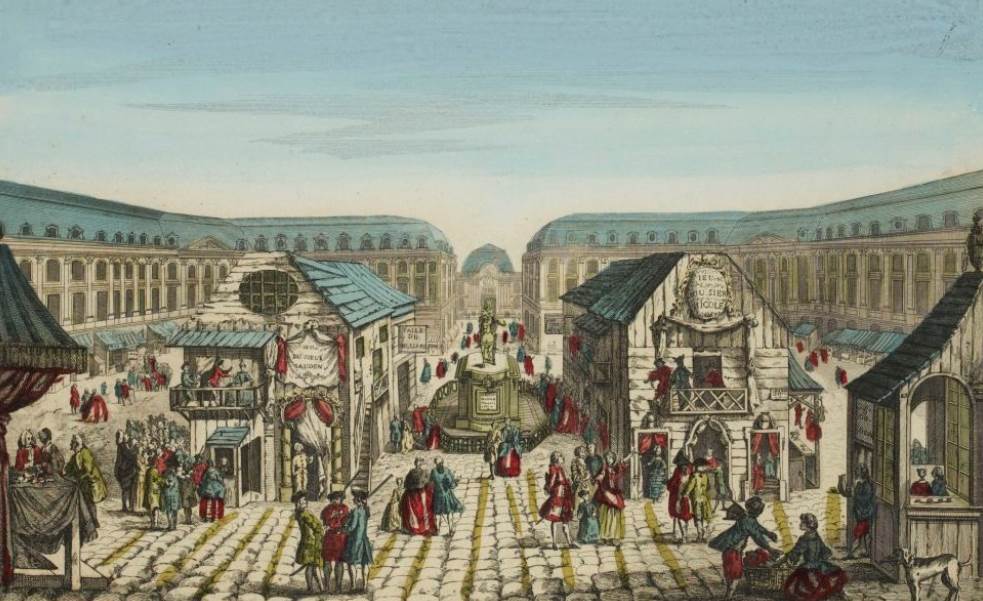
3. The square was modeled after another historic square in Paris
The square was designed by one of the most renowned architects in French history, Jules Hardouin-Mansart (1646-1708).
He designed some of the most iconic Baroque buildings in France such as the dome of Les Invalides and the Grand Trianon and the Hall of Mirrors at the Palace of Versailles.
He modeled the design of the Place Vendôme on that of the Place des Vosges, a public space originally referred to as the Place Royale. This square was completed in 1605 and had become one of the most popular spaces in the city.
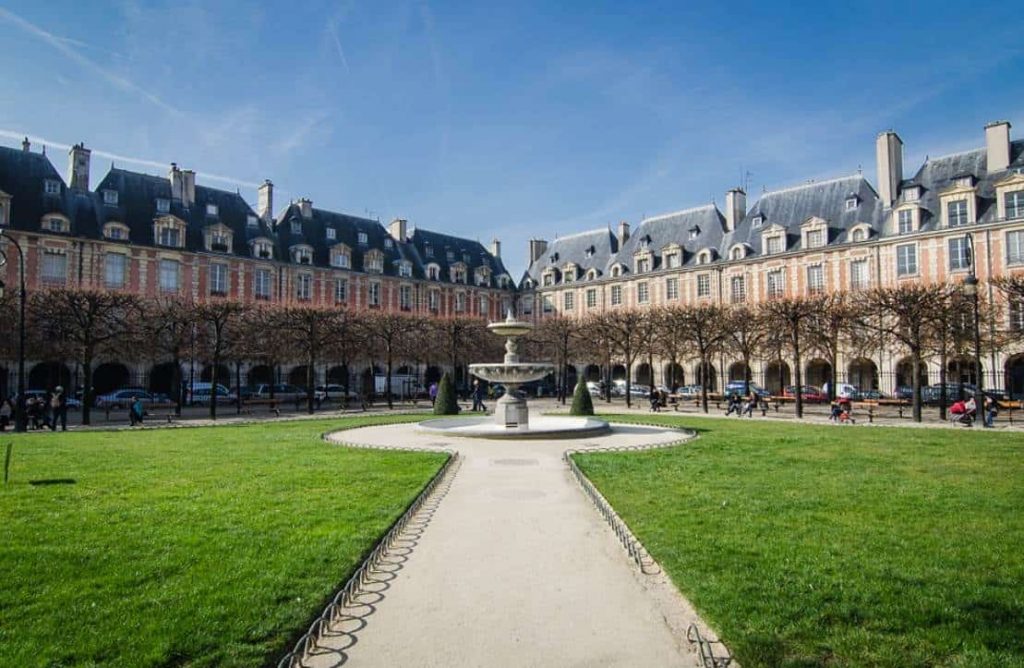
4. The Vendôme Column was modeled on an ancient column in Rome
With the equestrian statue of King Louis XIV demolished during the French Revolution, the square became nothing more than a huge open space.
Napoleon Bonaparte took note of this and commissioned a monument to commemorate the victory of the Battle of Austerlitz.
This battle is also known as the Battle of the Three Emperors and took place on December 2, 1805. It resulted in a win for the French over the Russian and Austrian Empires and resulted in the dissolution f the Holy Roman Empire.
Napoleon commissioned a column modeled on Trajan’s Column in Rome in 1806. 425 bas-reliefs with images related to this important battle during the Napoleonic Wars decorate the monument.
The reliefs were produced with bronze from canons from armies all around Europe and the column featuring a statue of Napoleon himself on top was erected in 1810.
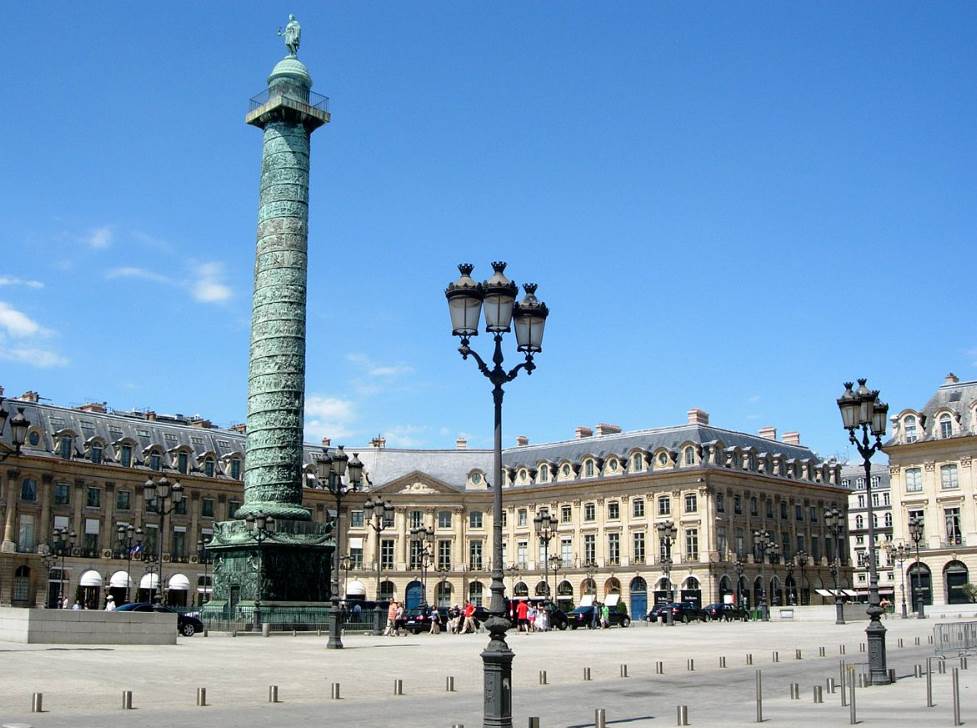
5. A French artist made a costly proposal during the Paris Commune in 1871
Gustave Courbet (1819-1877) was a French Realism artist who had socialist views and who became politically active in the second half of the 19th century.
He became an elected member of the Paris Commune in 1871 and write a letter in which he questioned the existence of a monument dedicated to war near the Rue de la Paix or “Peace Street.”
He proposed for the monument to be dismantled and placed inside the military complex of Les Invalides.
While his proposal wasn’t accepted initially, legislation was passed shortly after and the monument was taken down during the reign of the short-lived revolutionary government of the Paris Commune.
The Commune was suppressed and Courbet as ordered to repay 323,000 francs to the French state. Unable to make this payment, he went into exile in Switzerland where he died in 1877, 3 years after the monument was reerected in 1874.
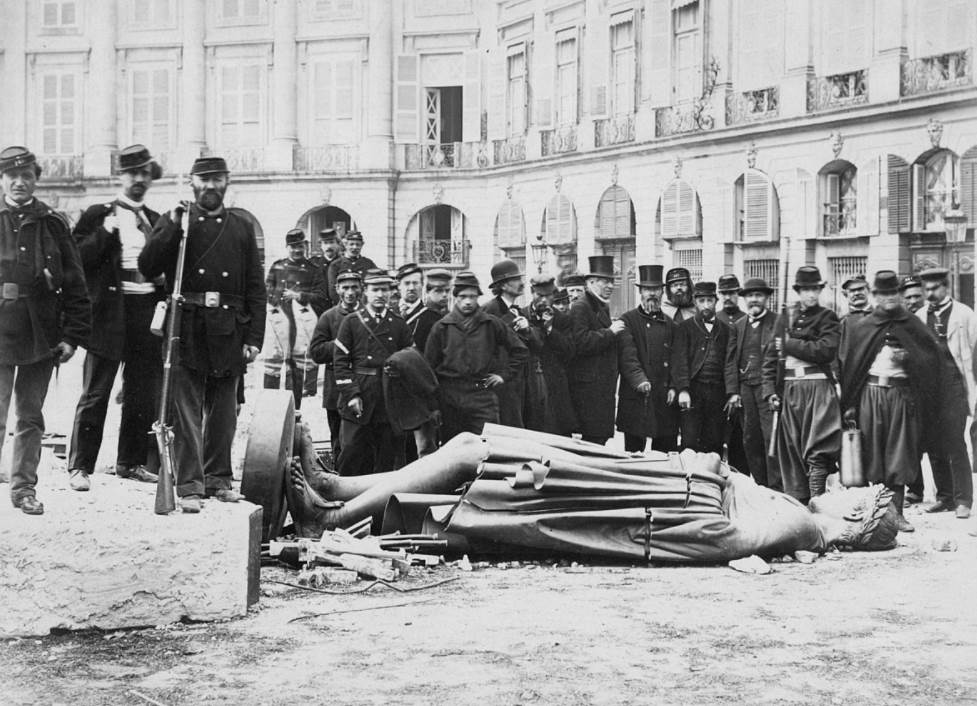
More interesting facts about the Place Vendôme in Paris
6. The large public space is nearly perfectly square but it still gives the impression of having an octagonal shape. That’s because the townhouses that line the square are cut off at the corners.
7. The Vendôme Column is a huge monument. It stands 44.17 meters (144.91 feet) tall to the tip of the statue of Napoleon. It has a diameter of 3.67 meters (12.04 feet) and features a spiraling staircase inside that makes it possible to travel all the way to the top.
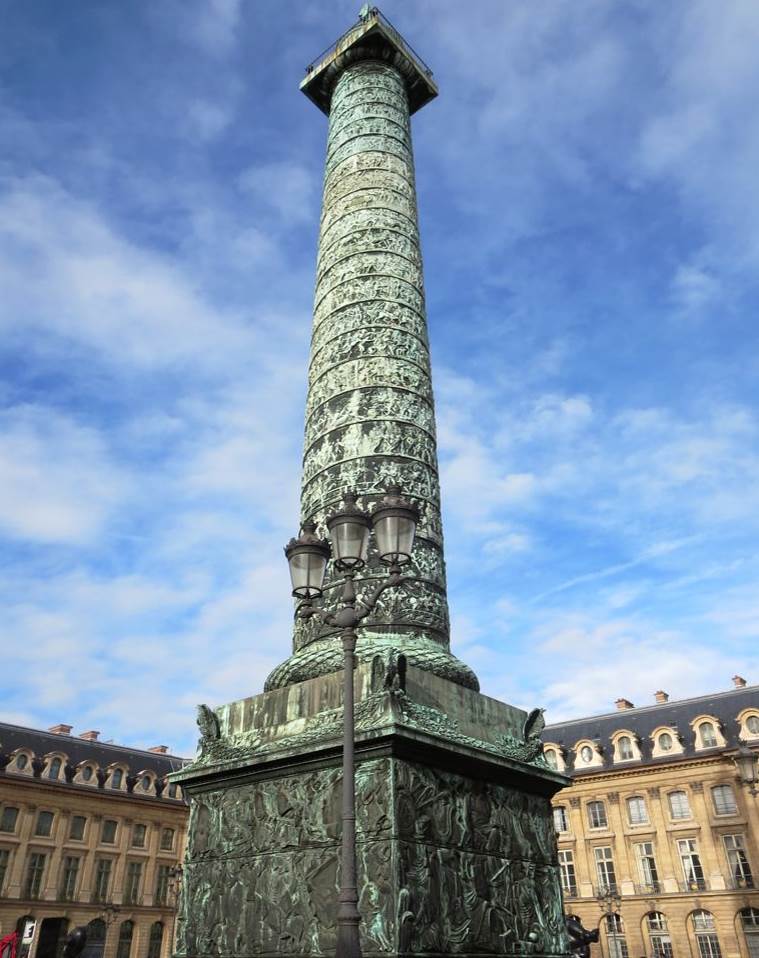
8. The design of the 325 bas-reliefs that decorate the exterior of the column was an incredible endeavor. About 30 sculptors were involved in the creation of bronze reliefs that were fabricated of 180 cannons seized during the Battle of Austerlitz.
9. The statue of Napoleon isn’t the original one. It was pulled down after the final Fall of Napoleon and the bronze was melted down to cast an equestrian statue of King Henry IV on the Pont Neuf, one of the most famous bridges in Paris.
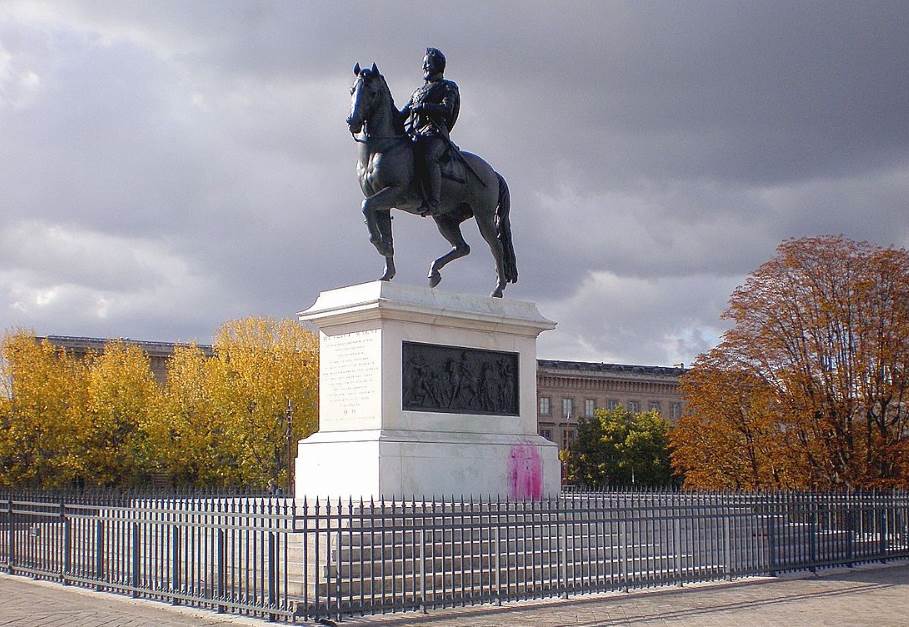
10. The square is surrounded by 28 opulent townhouses that are decorated with Corinthian pilasters. These buildings are referred to in Paris as “Hôtels particuliers.” Many popular hotel chains are located here, including the Ritz Paris.
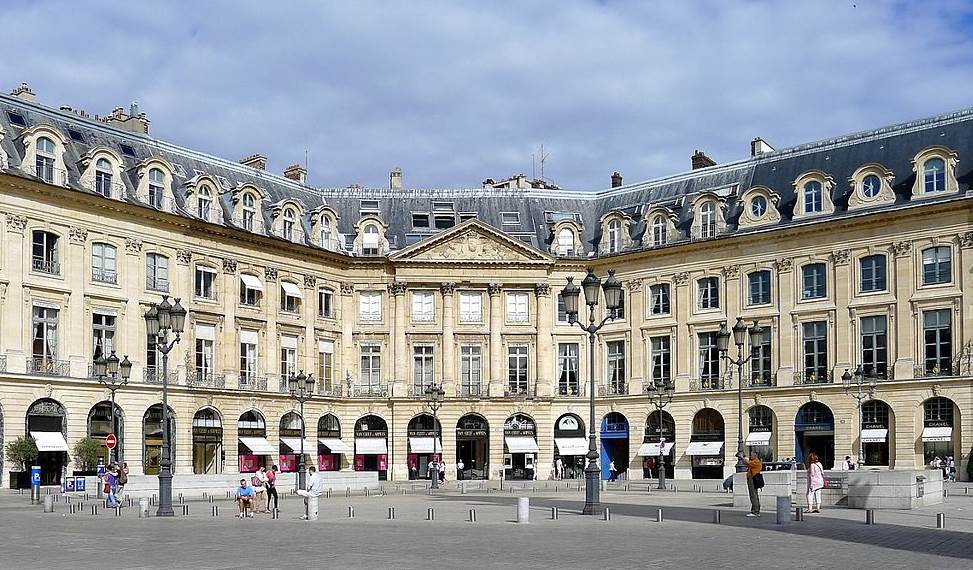
11. Many notable people have lived at the Place Vendôme. This includes Polish composer Frédéric Chopin (1810–1849) and French fashion designer Coco Chanel (1883–1971).
12. The compeltion of the Palais Garnier in 1875 was very important for the square. It wasn’t until this incredible opera house was completed that the fashionable boutiques and hotels moved here and to the Rue de la Paix.
